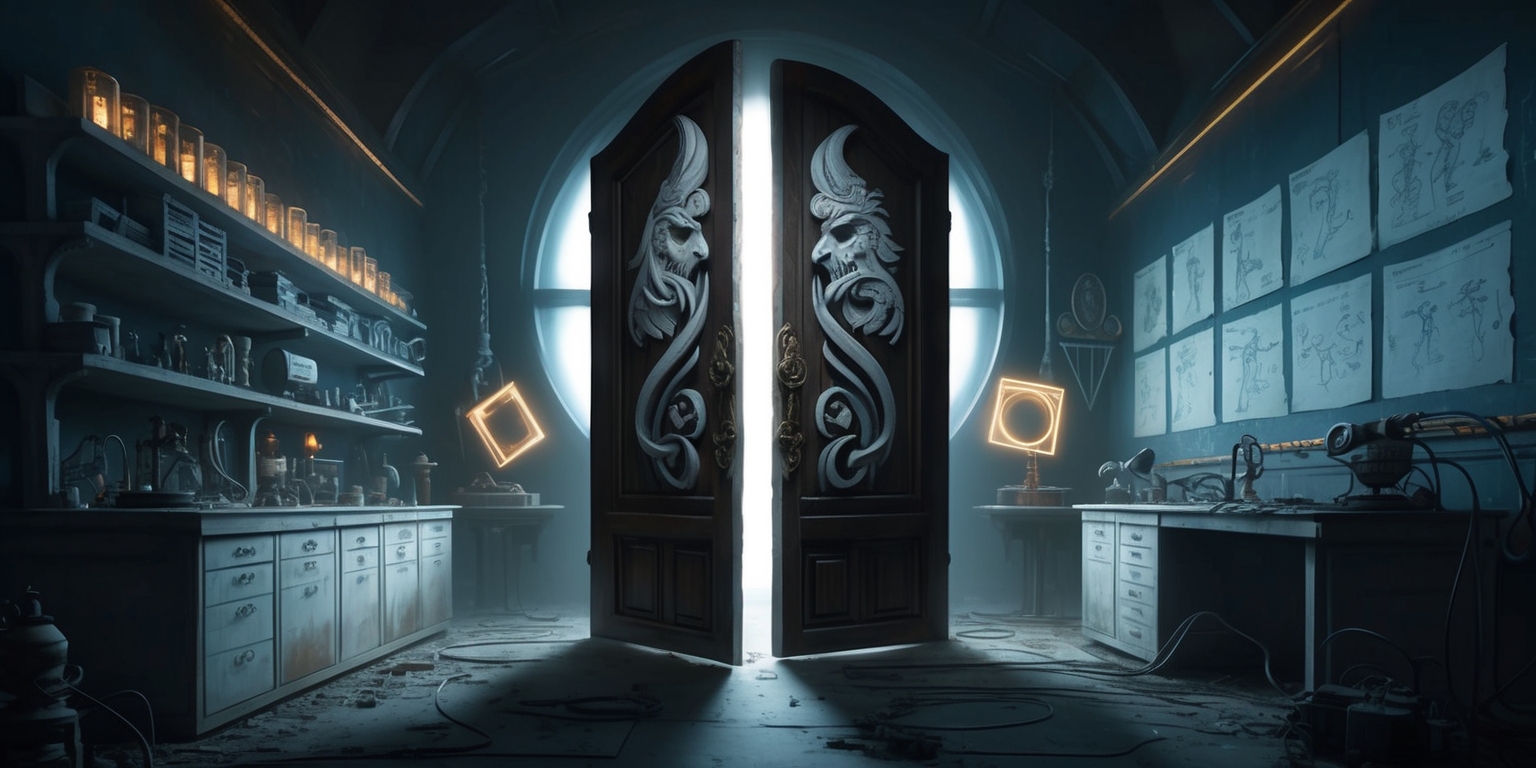Unveiling the Unseen: Inside Supercell’s Cancelled Creative Ventures
- 0

Supercell has become synonymous with remarkable mobile gaming experiences that resonate across the globe. Yet behind every viral title lies an intricate process of ideation, testing, and tough decisions. Over time, not all creative ventures proceed to launch, and a number have silently faded away. These abandoned projects have intrigued many fans who wonder about the innovative concepts that never reached their full potential. The story behind these games reveals a delicate balance between artistic vision and pragmatic business insights. The insights offered by these cancelled projects provide a window into the challenges of game development, resource allocation, and creative exploration, offering an intriguing glimpse into the studio's evolution.
A Glimpse into Unrealized Creativity
Within Supercell's vast portfolio, the cancelled games represent the unfulfilled dreams of a creative powerhouse. The studio is celebrated for its visually striking style aesthetics and vibrant gameplay mechanics, which have captivated millions. Each abandoned project carried a unique flavor, blending innovative ideas with the trademark visual style found in hits like Clash Royale and Hay Day. Despite their striking similarities, these concepts were designed to explore different gameplay dynamics and narrative structures. The internal decision-making process to shut these projects down reflects a careful cost-benefit analysis, where potential growth was weighed against the substantial investment in time, technology, and talent. This creative reservoir has nurtured successful titles, yet its unused ventures continue to spark the imagination of the fan community.
Economic Considerations and Technical Investments
Supercell's decision to cancel certain projects was not taken lightly. Each game in development requires a complex ecosystem: dedicated servers, skilled personnel, and robust infrastructure must all come into play to support a vibrant online community. The financial investment inherent in launching a new game demands a critical mass of engaged players who invest both time and money. During the development of multiple titles, the economic realities forced the studio to prioritize projects with the best prospects for longevity and profitability. This strategic decision-making demonstrates the practical challenges in the gaming industry, where flashy concepts must eventually align with fiscal responsibility. Though the cancelled projects possessed significant potential, they ultimately did not meet the essential criteria for sustainable growth.
Innovative Gameplay Mechanics Explored
Each cancelled game from the Supercell archives was conceived with its own distinct gameplay philosophy. These projects ventured into new territories, experimenting with different mechanics and user interfaces to capture the essence of what players around the world love. For instance, games like Clash Mini and Clash Heroes were intended to distill the strategic elements of larger franchises into more concise, engaging encounters. The gameplay prototypes emphasized quick decision-making, tactical maneuvering, and dynamic character abilities, challenging conventional mobile game design. Although these projects were shelved before reaching full development, they contributed to the studio's broader approach to seamless, intuitive gameplay. Insights from these experiments now influence design philosophies in current and future projects, highlighting the iterative nature of game development.
Visual Identity and Artistic Direction

One cannot discuss Supercell without mentioning its distinctive artistic flair, a quality that permeated even its unfinished projects. The studio's games often flaunt a cartoonish style that is both vibrant and approachable, a deliberate choice that sets them apart in the crowded market. The designs behind these cancelled titles were no exception; they embraced bold colors, fluid animations, and imaginative character designs. Artists at Supercell worked to establish a consistent visual language across their franchises, ensuring that each game could be easily recognized even before the title was fully developed. In many respects, the aesthetic of these unfinished ventures continues to influence the branding and visual storytelling found in their successful releases, making every discarded sketch a stepping stone toward future triumphs.
Functionality and User Experience Innovations
Exploration of the user interface and streamlined functionality formed a core part of the creative process in these cancelled games. Supercell consistently pushed the boundaries of what mobile interfaces could achieve, balancing complexity with accessibility. The designs aimed to create environments where players could interact fluidly and intuitively, utilizing minimalistic yet effective controls that complemented in-game visuals. Features that allowed rapid matchmaking, real-time strategy adjustments, and interactive social elements were tested extensively. While these elements did not always find their way into released projects, the lessons learned have informed the design decisions in later titles. Ultimately, these trials helped cement Supercell’s reputation for developing games that prioritize ease of use without compromising on the depth of gameplay mechanics.
Diverse Themes and Narrative Stories
The narrative frameworks developed for these projects offered a compelling mix of themes and storytelling techniques. Ideas ranged from whimsical adventures to more strategic, conflict-driven scenarios that blended fantasy with light humor. Story architects at Supercell sought to build immersive worlds in which every character was enriched by a unique personal history and each quest carried a deeper meaning. While the narratives of these games were often interwoven with the competitive mechanics typical of mobile strategy, they also provided room for exploration into unconventional lore and character dynamics. Even in their preliminary stages, these tales were crafted to engage players emotionally and intellectually, setting up layers of intrigue that ran parallel with the gameplay. These narrative ventures, though ultimately shelved, enrich the studio's legacy of combining fun with thought-provoking stories.
Experimental Collaborations and Crossovers
Another noteworthy aspect of Supercell’s cancelled projects lies in their willingness to experiment with cross-genre elements and collaborative features. Certain titles were envisioned as platforms where fan favorites from different franchises could interact in unexpected ways. The idea was to merge the charm of established heroes with novel gameplay mechanics, creating a hybrid experience that defied traditional categorizations. Such initiatives were intended to foster a more cohesive community by drawing connections between various gaming worlds. These projects were built on the premise of enhancing player engagement through collaboration and creative crossovers that blurred the lines between distinct game types. Even though these games never reached full fruition, their conceptual blueprints continue to influence strategies in how narrative and game mechanics can intersect in future titles.
Community Engagement and Feedback Integration
One of the most intriguing facets of Supercell's developmental process was its interplay with the gaming community. Feedback from fans was a vital part of shaping the direction of even the most ambitious projects, such as those that were eventually cancelled. Developers often experimented with beta releases and community surveys to fine-tune gameplay mechanics and aesthetic details. This iterative approach allowed players to influence design choices and even aspects of the narrative. In many cases, community insights helped prioritize features that resonated with the audience, even if they were later integrated into entirely different titles. The ongoing dialogue between the studio and its fans highlights a commitment to maintaining a dynamic, player-centric development process, ensuring that creative risks are continuously informed by direct user engagement.
Internal Resource Management and Strategic Prioritization
Behind the scenes, the decision to cancel some projects was largely a function of internal prioritization and resource management. Supercell recognized early on that maintaining multiple unique titles simultaneously required careful balancing of talent and technology. The operational dynamics of launching a successful title are extensive, involving everything from extensive server support to continuous post-launch updates. For every bold idea, there was an intricate framework that needed to be supported by substantial human and financial capital. Faced with these systemic challenges, the development team often had to make difficult choices between pursuing innovative experiments and consolidating support for projects with assured success. This pragmatic approach to project management ensured that the studio could focus its energies on those titles with the highest potential impact on their global fan base.
Evolution of the Supercell Philosophy
The cancelled games illustrate a broader narrative of continuous learning and adaptation within Supercell. Every project, whether fully realized or not, contributed to the evolution of the company’s creative and operational philosophies. The feedback loops, both internal and external, streamlined the process of refining game mechanics, enhancing user interfaces, and developing narratives that resonate with diverse audiences. Each abandoned concept served as a learning opportunity, paving the way for subsequent successes. Elements of these cancelled titles can be traced through later hits, underscoring a cyclical pattern of innovation, review, and refinement. Supercell’s willingness to abandon projects that did not meet rigorous standards "serves as clear evidence of its unwavering pursuit of excellence." and its desire to continuously push industry boundaries in an ever-changing market.